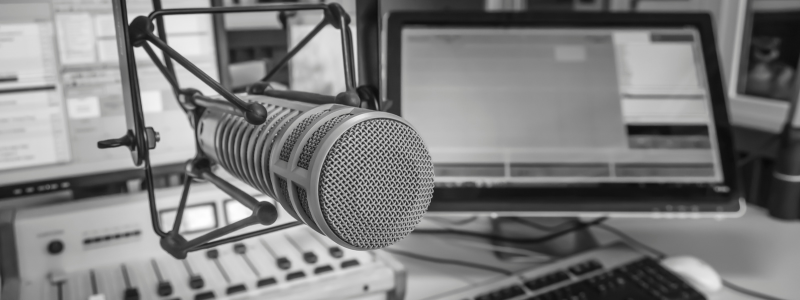The Top Ten tips for radio interviews and how to achieve radio coverage
Do you know the best ways to use the incredible power of radio to boost your storytelling and achieve your PR and communication goals?
AM, FM and DAB radio stations can give you access to tell your story to a huge audience, while giving the listener what feels like a very personal listening experience.
To capitalise on radio opportunities in commercial radio or via our national broadcaster ABC Radio, clients should follow some simple PR guidelines, such as ensuring they are always contactable for interviews on the day a media release is sent.
Other tips include understanding the unique workday flow of a radio station, learning to speak in short and succinct audio bites, projecting your voice in interviews, pre-recording your message if appropriate, and harnessing the power of networked programming.

Another tip is to find a PR Agency that actively monitors the media and looks for “news jacking” opportunities where your spokesperson can contribute to the narrative and provide expert commentary, perspective, and advice.
Radio can also provide other multi stream avenues for your message through social media platforms, as well as podcasting, all of which work to amplify your overall PR campaign
ALWAYS BE ACCESSIBLE TO MEDIA
On the day a media release is sent to a radio station’s inbox, it’s essential the company spokesperson or quoted individual is freely available for interviews. Given the fast-paced nature of the daily news cycle, a radio newsroom may require an interview “at earliest” convenience, which could be just minutes, after distribution.
It’s best practice for a spokesperson to clear their diary of major appointments on the day a media release is sent, so they can respond quickly to media interview requests made through their PR team. It also means they have time to focus on key messaging without distractions.
EXCEPT THAT EARLY MORNING CALLS ARE THE NORM
A spokesperson should be prepared to get phone calls for interviews from radio show producers, or journalists, any time from 6am. The Breakfast Radio Shift is the flagship shift of any radio station airing between 5.30am and 9am each weekday, although radio newsrooms often start operation from 3am.
AVOID TOP AND BOTTOM OF THE CLOCK
When calling into a radio newsroom, avoid top and bottom of the hour. The journalist taking your call is often delivering live bulletins in a news studio on the bottom of the hour, and the top of the hour, and not sitting by their desk. Ringing outside their on-air times, will ensure you have a better chance of making phone contact. This rule does not apply so much to show producers, as they don’t have a live segment to deliver.
BE CLEAR ON YOUR KEY MESSAGING
Radio newsrooms typically air news grabs no longer than 15 seconds, so it’s important to make sure your key messaging can be delivered in short succinct sound bites. Taking the time to identify and prioritise important talking points before you interview is important preparation. Spokespeople should always avoid industry jargon and aim for a warm and conversational delivery.
Media training with experts like the coaches, journalists, and corporate affairs experts who lead Adoni Media’s team of media trainers, helps you learn the formula for creating messaging and delivering it with impact and gravitas.
EMBRACE THE PRE-RECORDED MESSAGE
In addition to a phone interview, news grabs can be pre-recorded and attached to your media release. It means you have greater control over your key message and it’s convenient. Sound bites from key spokespeople are relatively quick and easy to download, saving the journalist valuable time.
Given the pressures on busy and often under resourced newsrooms, providing ready to go audio enhances the likelihood of securing coverage. This is particularly applicable in the morning when they are “chasing audio” ahead of the news day cycle.
HARNESS THE POWER OF NETWORKED PROGRAMMING
Radio can offer a big return on your efforts, due to networked programming. A ‘grab,’ or interview answer, recorded by one station can be shared with other capital city and regional stations across the country. Many radio networks also have dedicated national news bulletins at certain times of the day, so a story of national significance can have particularly wide reach.
GO LOCAL
Another tip for maximising your radio coverage, is to “go local”. Radio stations have very clear broadcast areas, and a programming priority is to focus on local issues, concerns, and events. Finding angles that impact and appeal to listeners increases the chance of coverage. In regional areas, with strict local content rules for news, this is even more important.
LOOK FOR “NEWSJACKING” OPPORTUNITIES
Journalists are always searching for fresh angles on strong stories. Be proactive and if a breaking news story or issue is relevant to your business or industry consider what information your spokesperson can contribute. It is known as ‘news jacking’ and is a great opportunity to position spokespeople as thought leaders.
ALWAYS PROJECT YOUR VOICE
Doing radio interviews can be daunting but aim to maximise the power of your voice with good breath control. Simple deep breathing exercises before an interview helps calm down nerves and centre your thinking. Practice good strong projection, and clear diction. “Ums and ahs” will often be edited out of an interview, but stopping, and taking a pause to gather your thoughts, is the best way to avoid them. You can find more advice on overcoming nerves and breathing tips here.
ALWAYS ASK TO GO AGAIN IF YOU ARE UNHAPPY WITH A RADIO INTERVIEW
When doing interviews with a radio newsroom, they are pre-recorded to play on air in following bulletins. If you feel you have not answered the question in the most effective way, or if there are stumbles, always stop, and ask to go again. Unless it is a live interview. In that case you have to recover, and do your best to keep going.
Remember, the journalist wants the best ‘grab’ they can get because it makes better radio.
LOOK FOR PODCASTING OPPORTUNITIES
Podcasting has exploded in recent years and radio networks often have affiliated podcasts on a wide range of topics. It provides another avenue to build brand awareness.
LEARN HOW TO DO A RADIO INTERVIEW
Adoni Media has Australia’s most experienced team of media training experts including former radio news bosses, producers, and presenters who train executives and spokespeople to feel confident on-air.
There is more information about media training here including options to train in a studio.


